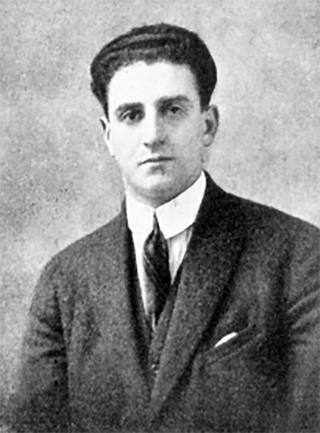KR Wilhelm (Willy) Kurtz

Personalia
Born:
Died:
Profession:
Persecution:
Imprisonment March 1938 - 02.04.1938,
Dachau concentration camp 02.04.1938 - 22.09.1938,
Buchenwald concentration camp 22.09.1938 - 16.10.1942,
Auschwitz concentration camp 16.10.1942 - 09.12.1942,
Murdered on 09.12.1942
KZ Number:
Curriculum Vitae
Wilhelm "Willy" Kurtz is born in Linz as the legitimate son of Isidor Kurtz and the jeweler's daughter Berta, née Herzl. Soon after his birth, the family moved to Vienna, where Willy Kurtz grew up. In 1921, Berta Kurtz bought the house at Kellermanngasse 8 in the 7th district, where Willy Kurtz also lived. In 1922, Willy Kurtz converted from Judaism to Protestantism at the same time as his parents and siblings. Willy Kurtz ran an art shop at Weihburggasse 4 in Vienna's First District and was appointed Kommerzialrat in 1935.
Willy Kurtz was also very involved in sport, both as a sportsman and as a sports official. As a boxer, he won the Austrian national championship title several times and also took part in swimming competitions. Like many other boxers, he also worked as a referee and official during his sporting career. Will Kurtz was a board member of several of the sometimes short-lived boxing associations and was the founding president of the Austrian Boxing Association in 1920. After a dispute in the amateur association, he switched to the professionals, but retired again in January 1924. At the same time, he was also active as a soccer official - with FK Austria and the Vienna Football Association - as well as in motorcycle racing. At 1.90 meters tall and weighing 100 kg, the heavyweight boxer, dubbed Kritzendorf Giant or our giant amateur heavyweight by newspapers, is an impressive figure.
In the interwar period, Willy Kurtz is also involved in the Austrian Homeland Security and becomes the administrator of the professional boxing association, appointed by Prince Starhemberg. In January 1938, he presided over the re-election of the board of the Austrian Motor Racing Association.
In these roles, Willy Kurtz witnessed the downfall of a free and independent Austria when the German Wehrmacht invaded Austria on March 12, 1938. Just a few days after the occupation of Austria (an exact date is not certain), the opponent of National Socialism was arrested by the Gestapo and deported to the Dachau concentration camp on April 2, 1938 on the so-called Prominent Transport. His gigantic stature made him the preferred victim of abuse by the SS guards in the concentration camp. On September 22, 1938, he was deported to the Buchenwald concentration camp and transferred from there to the Exchwitz concentration camp on October 16, 1942. He was murdered there by the National Socialists on 9 December 1942.
Places
Residence:
Persecution:
Death Place:
Citations
Dokumentationsarchiv des österreichischen Widerstands (DÖW)
Wikipedia unter de.wikipedia.org/wiki/Wilhelm_Kurtz_(Sportler)
Wien.Geschichte.Wiki unter www.geschichtewiki.wien.gv.at/Wilhelm_Kurtz#tab=Bild
Jüdische Sportfunktionäre unter juedische-sportfunktionaere.vga.at/jso/view/1081
